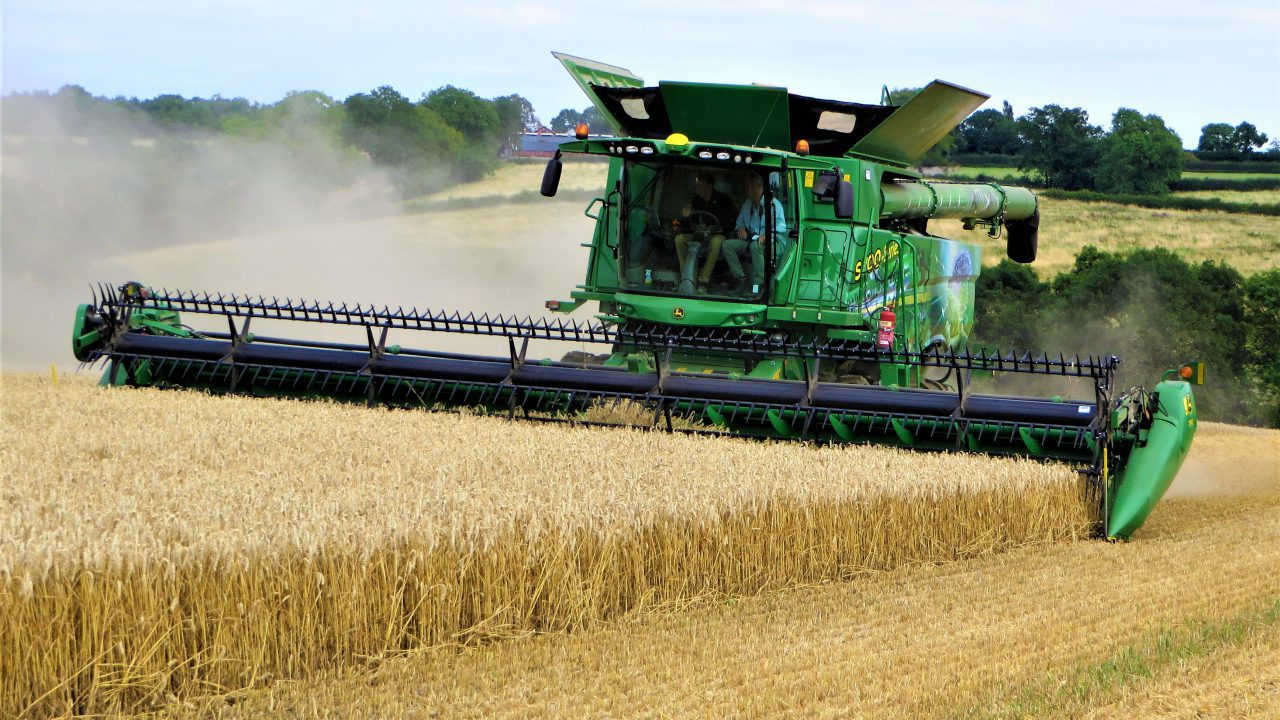The total cereal production for harvest 2023 is estimated to be 1.93 million tonnes, which is down by 492,500t compared to the previous year.
The Teagasc Harvest Report 2023 states that the 20% reduction in cereal production is due to a reduced cereal area and below average yields.
The report shows that all cereal crop yields are below their five-year average in 2023 as adverse weather at critical times took its toll.
Rain during the key planting months of October 2022 and March 2023 resulted in a below average area of winter cereals and delayed planting of spring cereals.
The report states that the cereal area planted this autumn is estimated to be at its lowest level since 2013 due to recent poor weather conditions.
Cereal production
Teagasc noted that there was a record area of winter oilseed rape (20,500ha) and spring beans (14,900ha) planted for harvest 2023
The total cereal area reduced by 6.4% in 2023 when compared with the previous year.
When the increased planting of winter oilseed rape (+41%) and spring beans (+60%) are included, the overall tillage area was down by 2% on 2022 levels.
However when the increased area of winter oilseed rape (+41%) and spring beans (+60%) are factored in the overall tillage area reduced by 2% when compared to 2022.
Teagasc said that the drought conditions in late May and June played a major part in the poorer yields recorded in late sown spring crops.

The intense rainfall in July resulted in a high level of lodging in cereal crops, particularly spring barley.
The report noted that spring oats and barley remain unharvested following the challenging season.
The reduction in the cereal area, lodging and difficult weather also led to a significant drop in the volume of straw produced in 2023.
Disease levels in crops were low in 2023 which was helped by dry weather in the second half of May and June.
Harvest 2023
The Teagasc report outlined the following results for individual crop types in harvest 2023:
- Winter wheat: Area of 51,200ha, down 9,200ha on 2022. Average yield was 9.5t/ha which is 1.1t/ha below the record yield of 11t/ha in 2022;
- Spring wheat: Area of 4,500ha, down 2,000ha on the five-year average. Overall average yield of 7.6t/ha which is 0.4t/ha below the five-year average;
- Winter barley: Area of 53,200ha, down from 73,800ha in 2022. Overall average yield of 8.7t/ha, just slightly below the five-year average for the crop;
- Spring barley: Area of 131,800ha, up 15,300ha on 2022. Overall average yield of 6.4t/ha, which is 1.1t/ha below the five-year average;
- Winter oats: Area pf 10,200ha, 5,000ha lower than 2022. Average yield for the crop was 8.3t/ha, just below average;
- Spring oats: Area of 16,600ha, up 3,600ha on 2022. Average yield was 7.2t/ha, 0.3t/ha below the five-year average;
- Winter oilseed rape: Area of 20,500ha, up 3,000ha on 2022. Average yield was 4.4t/ha which is slightly below the five-year average of 4.6t/ha.
- Spring beans: Area of 14,900ha, up from 11,400ha in 2022. Average yield was 5.4t/ha which is close to the five-year average.
Commenting on the report, Michael Hennessy, Teagasc head of crops knowledge transfer, said: “The cropping year leading up to the harvest of 2023 was very challenging with excessive rain and drought conditions effecting the final yield in many crops.
“The weather pattern appear to be even more unpredictable than normal and many farmers are asking if climate change is already adversely affecting their businesses.”
